A team of Indian scientists has reported the discovery of a previously unknown ‘supercluster’ of galaxies, some four billion light years away from Earth, and named it Saraswati. Superclusters, a group of clusters of galaxies, are the largest structures of stars, planets and other heavenly bodies in the universe, and very few of them are known.
“There are basically only four or five known superclusters of this size in the entire universe. So, our discovery is a rare find,” Shishir Sankhyayan, a PhD student at the Indian Institute of Science Education and Research (IISER), Pune, who was part of the team of scientists that discovered the supercluster, told The Indian Express.
Besides Sankhyayan, the team had scientists from Inter-University Centre for Astronomy and Astrophysics (IUCAA), Pune, Newman College in Thodupuzha in Kerala, and National Institute of Technology, Jamshedpur, and was led by Joydeep Bagchi. Their paper is being published in the next issue of The Astrophysical Journal, the research journal of the American Astronomical Society.
Galaxies are themselves made of billions of stars and planets, and a cluster typically contains several hundreds of these galaxies. Superclusters are relatively recent finds, having been identified for the first time only in the 1980s. In fact, Somak Raychaudhury, director of IUCAA and a member of this team, is credited with finding one supercluster in 1989 when he was a PhD student in the UK.

The Milky Way galaxy, of which Earth is a very small member, is part of the Laniakea supercluster, that was identified only in 2014, a statement from IUCAA said. Sankhyayan said the Saraswati supercluster was estimated to have a mass of 2 x 1016 (twenty thousand trillion) suns, and could contain thousands of suns, besides having billions of stars, planets, other bodies, gases and dark matter. Saraswati is estimated to be stretched over 650 million light years in distance.
“Since our information is based on signals received from stars at such massive distance, we are essentially looking into the past of the universe, as light from these stars has taken about four billion years in reaching us. It is around this time, scientists believe, that dark energy, about which we know little, had begun to dominate the space in the universe. The study of Saraswati therefore is likely to offer more insight into our understanding of dark energy,” Sankhyayan said.












